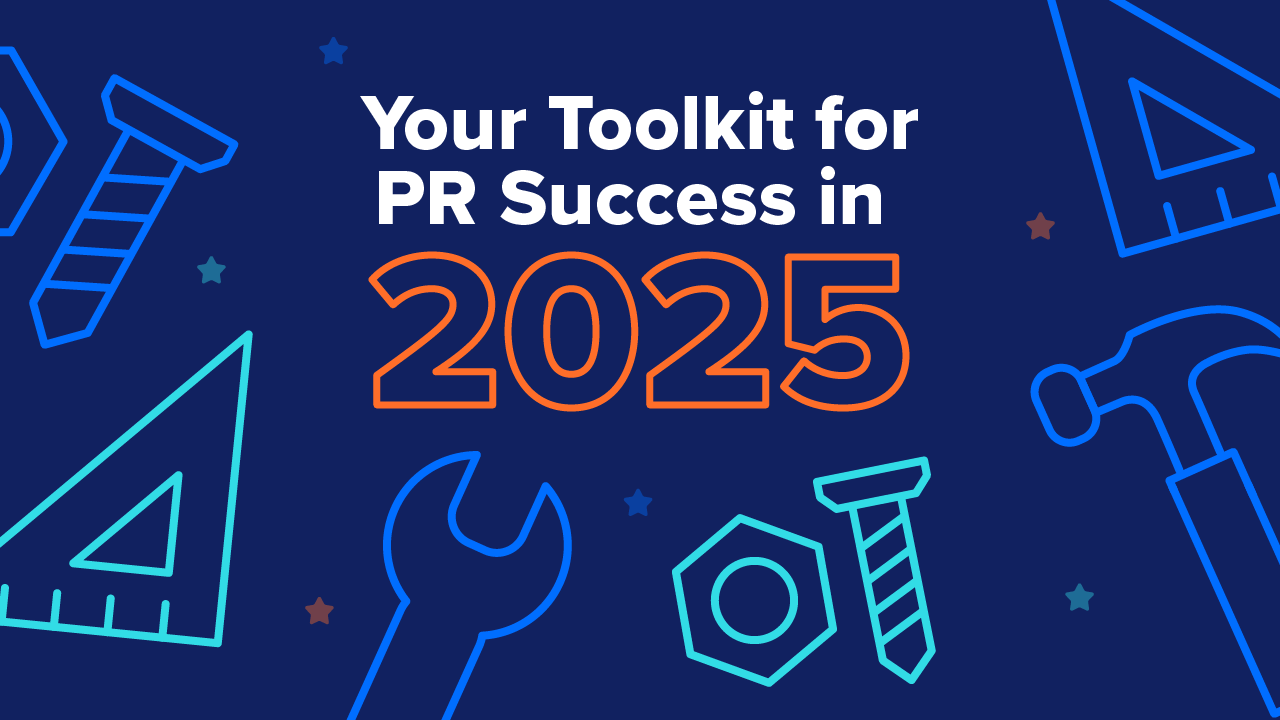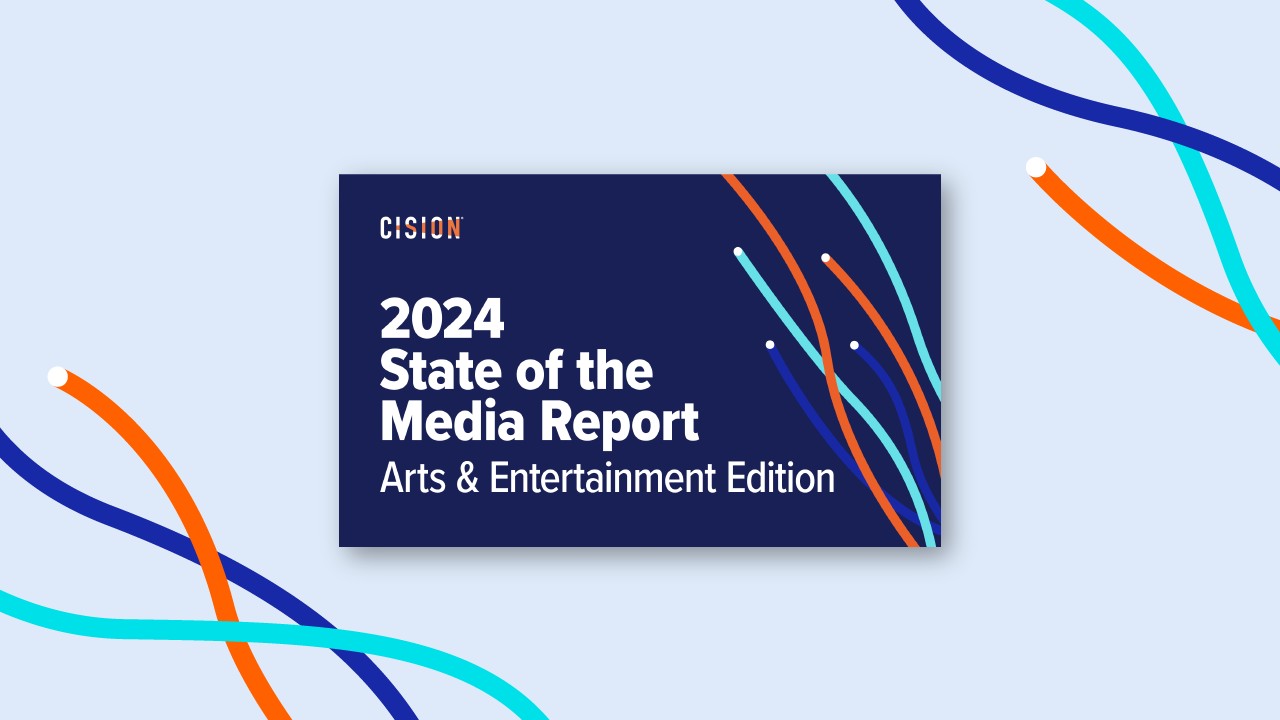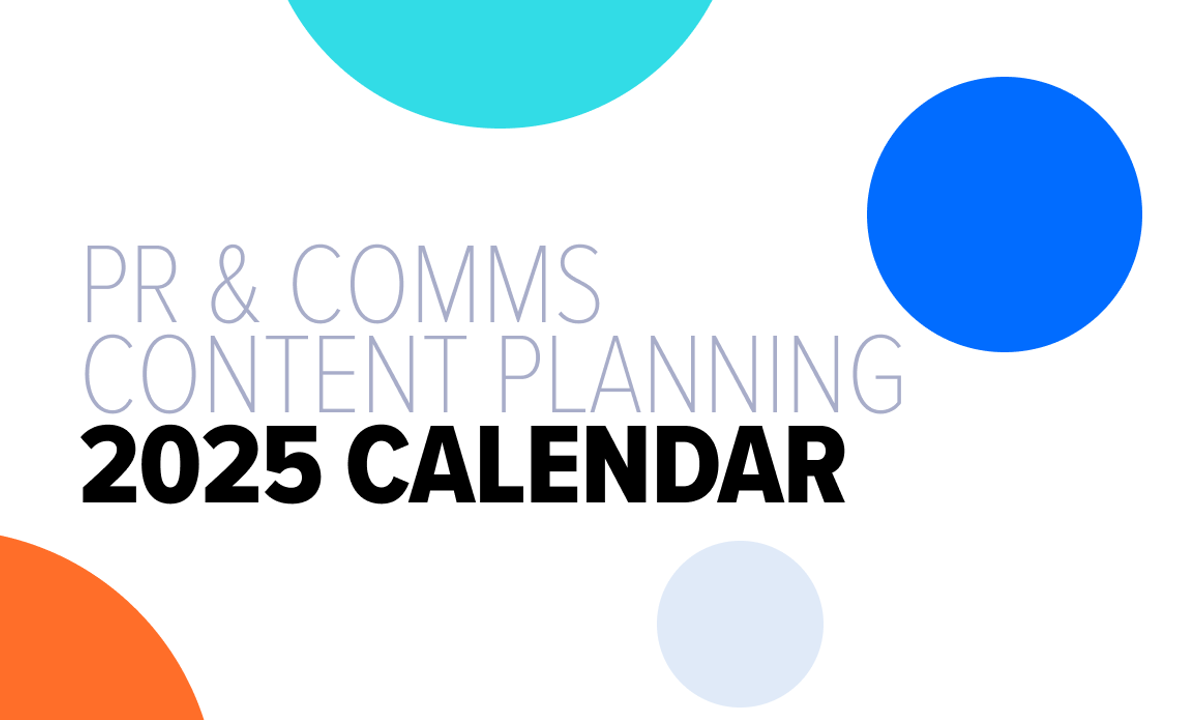Journalists are the gatekeepers of public opinion, swaying audiences and steering trends.
But who is the gatekeeper of their information? That’s where a media database comes in.
A good media database can help you identify and engage relevant, influential journalists who can amplify your brand’s story, thus enhancing your overall PR strategy. Let’s take a look at how it all works.
What Is a Media Database?
A media database houses the contact information and bios of journalists, influencers, bloggers, reporters, and other media professionals.
The definition of a media database varies depending on its use cases and features, but generally speaking, it’s a digital directory that allows PR professionals to find and connect with their ideal media contacts, in the hopes of generating publicity.
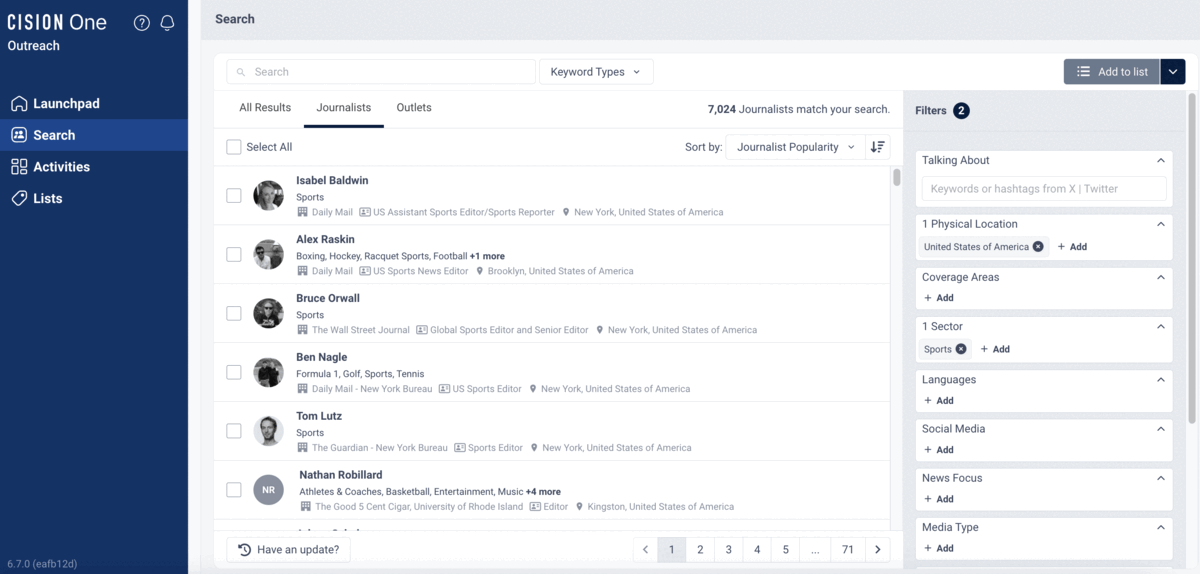
Think of the last piece of news you read. It’s entirely possible that it was the result of a PR pitch sent via a media database.
Remember, for instance, when the news broke that NFTs – a once coveted digital art form that had been selling for millions of dollars – had suddenly become worthless overnight?
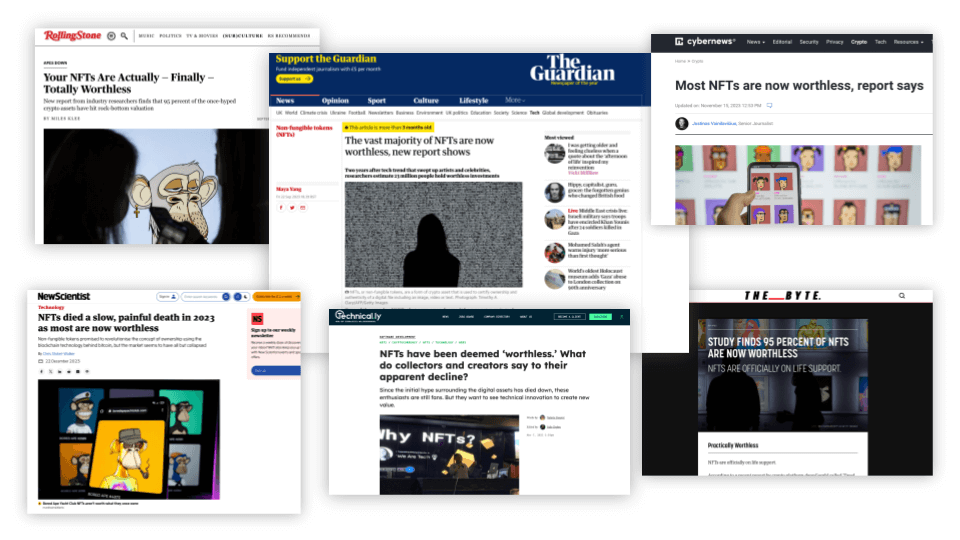
That was all thanks to some cleverly coordinated PR from the agency Bottled Imagination, sent via a press pitch to journalists at The Guardian, Bloomberg, and The Times.
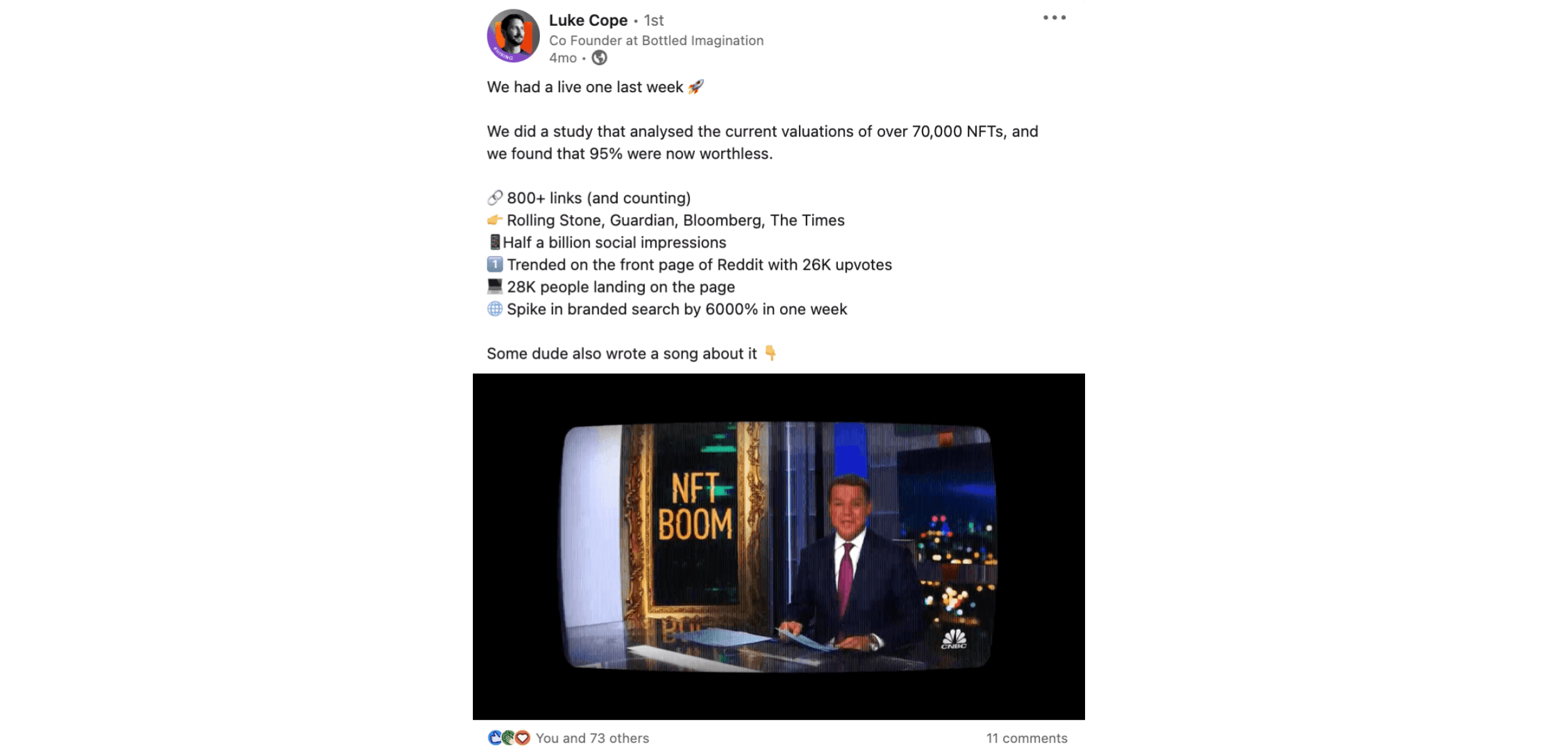
Building relationships with journalists to generate this kind of publicity isn't easy, but with the right tools, containing the right information, PR professionals have a much better chance of cutting through.
Media database software should allow you to discover more about a journalist’s...
Expertise
Interests
Outlets
Contact information
Content archives
Region
Industry connections
... so you can engage with the ones most relevant to your campaign, win coverage in their content, and nurture those valuable relationships.
As one journalist shares in Cision’s 2023 State of the Media Report, “I’m impressed when someone seems to really understand what I cover and pitch accordingly.”
Media databases make this possible.
Find out what journalists really want from your PR. Read the latest State of The Media Report which surveys 3k journalists on their biggest challenges to date.
What is a Media Database Used For?
Given their adaptability, media database services can be valuable for all kinds of PR.
We’ve already seen one example of how a PR database can be used, but let’s consider some more use cases.
Public Relations Crisis Management: PR teams use media databases to swiftly reach out to trusted contacts, share accurate information, and effectively manage the narrative in real time.
Creative PR Campaigns: PR teams use media contact databases to find authoritative journalists and influencers to cover their creative campaigns, and ultimately drive brand awareness.
Marketing Product Launches: Media databases play a pivotal role in product launches, by pinpointing influencers and media outlets who are aligned with the target audience, and can help generate a buzz around a new product.
Story Research: Journalists and content creators use PR media databases to discover potential sources, experts, subjects, and interviewees. Databases streamline their access to information, accelerate research, and enhance the authenticity of their content.
Event Promotion and Coverage: Media databases help organizers promote events by connecting them with relevant media outlets and influencers willing to offer coverage before, during, and after an event. This engages your audience from the get-go and enhances the event’s overall success.
Features of the Best Media Databases
Fresh information on media contacts
Recent redundancies and personnel changes mean journalist inboxes are either inactive or overflowing.
With so much movement in the industry, keeping track of which writers cover which topics, for which audiences, is a full-time job. Who has the time or resources (or – let’s be honest – the patience) for that?
But outdated media contacts lead to bounced emails, unanswered pitches, missed opportunities – basically, lots of frustration.
That’s why it’s so important for your media database to have fresh, accurate, and auto-updating journalist information.
In the CisionOne media database, for example, we push through 20k daily updates to make sure our users have access to only the latest journalist insight.
Detailed media profiles
Mounting levels of pitch spam have left journalists with big trust issues.
As a result, it's harder than ever for PR pros to get their pitches heard and their campaigns amplified.
If you want to get in front of journalists who are keen to work with you, you need to do deep research into who they are and what they do.
That means investing in robust media database profiles that go beyond just contact info, to provide:
Publication or media outlets
Titles
Beats or niches
New job roles
Social media handles
Recent bylines / published work
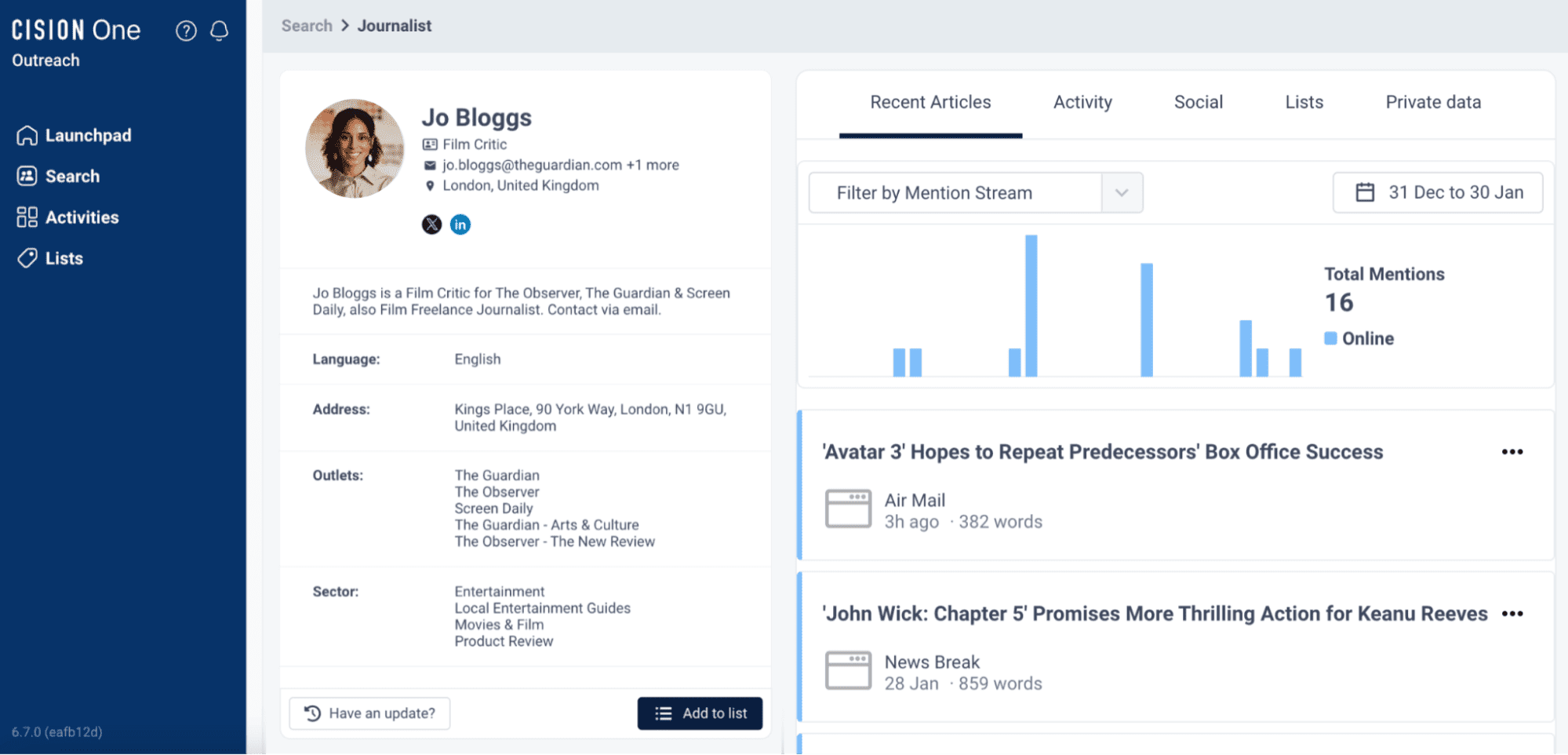
In our State of the Media report, only 7% of journalists deem the pitches they receive relevant.
Top PR media databases will give you deep information on a journalist and their content, so you can up the ante on personalization.
And some will even let you create a library of templates, so you can spend more time fine-tuning your pitches and boost the chances of them getting read.
Campaign-specific filtering
To land major press coverage, you need a media database that lets you search and filter journalist contacts by relevance factors like beat, outlet, region, bio details, media type (print, radio, internet, podcasts, etc.), and more.
You’ll also want the option to save your search criteria for later use. This targeting will help you get your story in front of the right journalists and audiences.
Streamlined outreach and reporting
To continuously improve your pitching strategy, opt for a media database solution with built-in outreach and analytics.
Key features like email distribution, tracking, and reporting enable you to send targeted pitches and measure results, so you can understand what works.
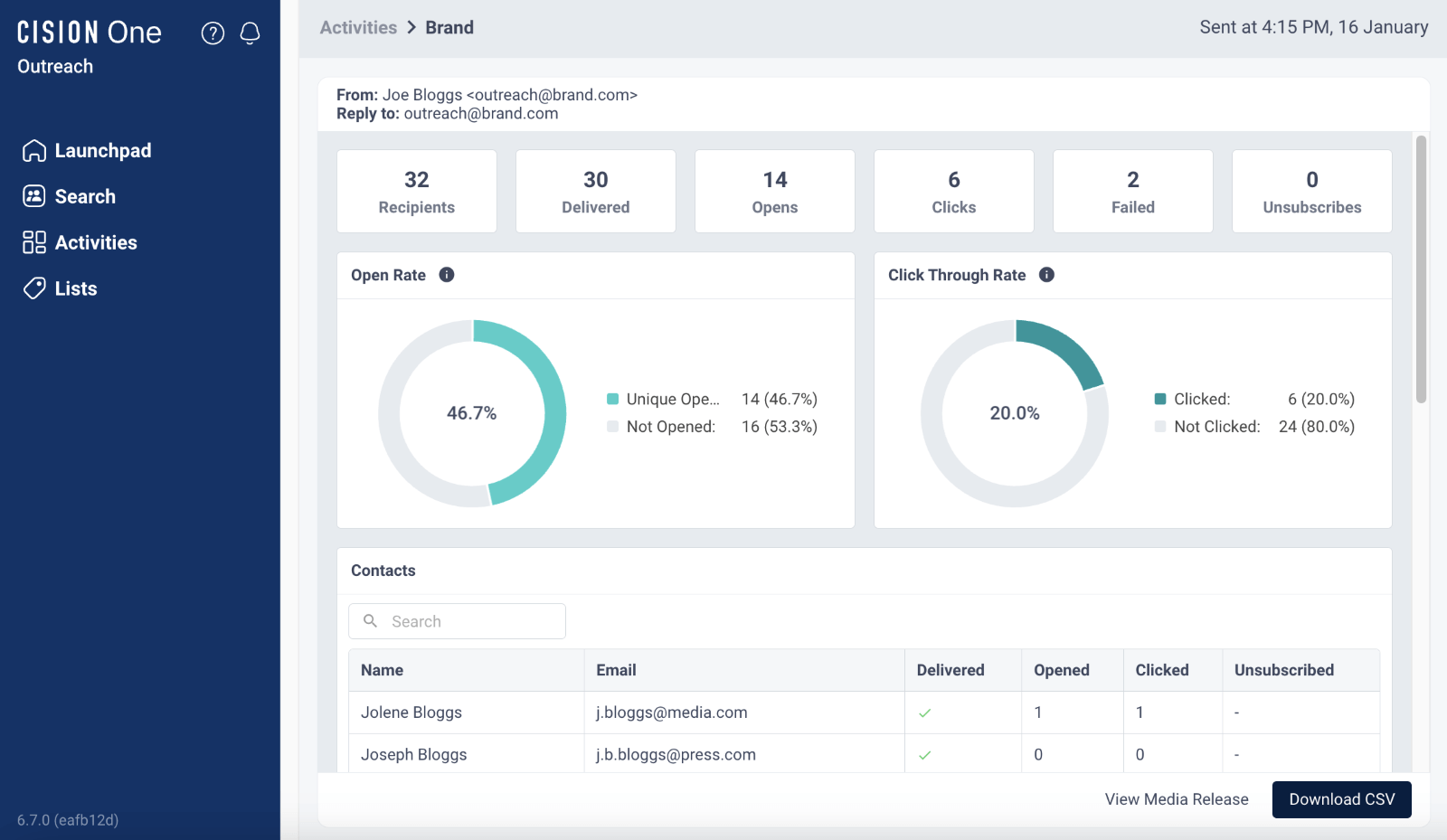
Collaborative workspaces & workflow integrations
Successful media outreach isn’t done in silo. That’s why it’s crucial that your database has integrated workflows to support team collaboration.
A good media database enables you to:
Integrate with your business email so you can send pitches directly from the database, and reply from your own inbox
Consolidate records of team pitches for better visibility and no overlap
View, share, and export data to enrich existing reports and media lists
Schedule media commitments to plan turnaround time and resourcing
Clarify relationship ownership to reduce the risk of duplicate pitching

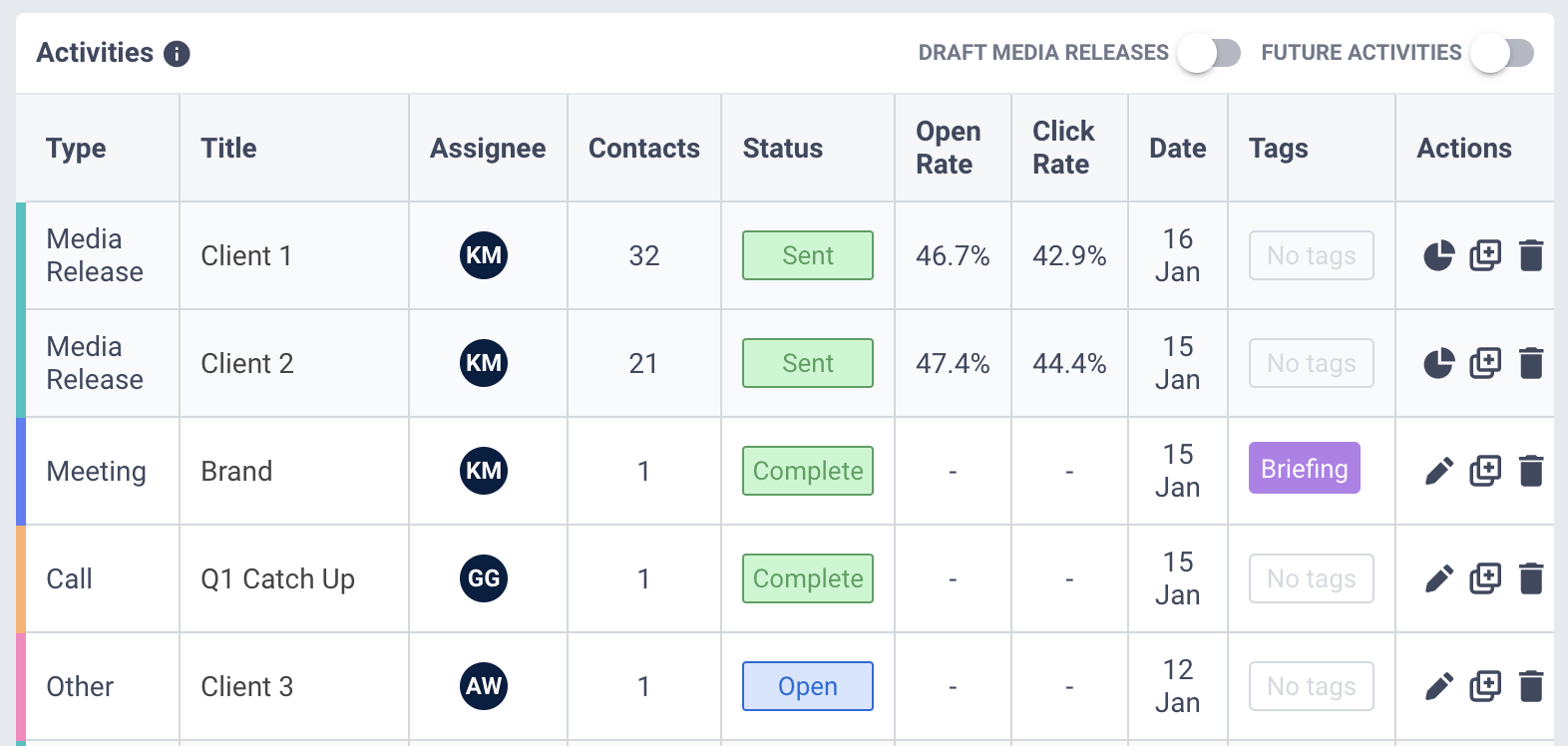
How Do You Use a Media Database?
As you can probably imagine, different media databases work in slightly different ways, but all of them should allow you to:
Search journalist names
Track down the journalists and influencers you already know.
Search topics or sectors
Find advocates who create content that closely aligns with your campaign topic, either based on their sector or the topics they’re writing about – eg. “Artificial Intelligence”.
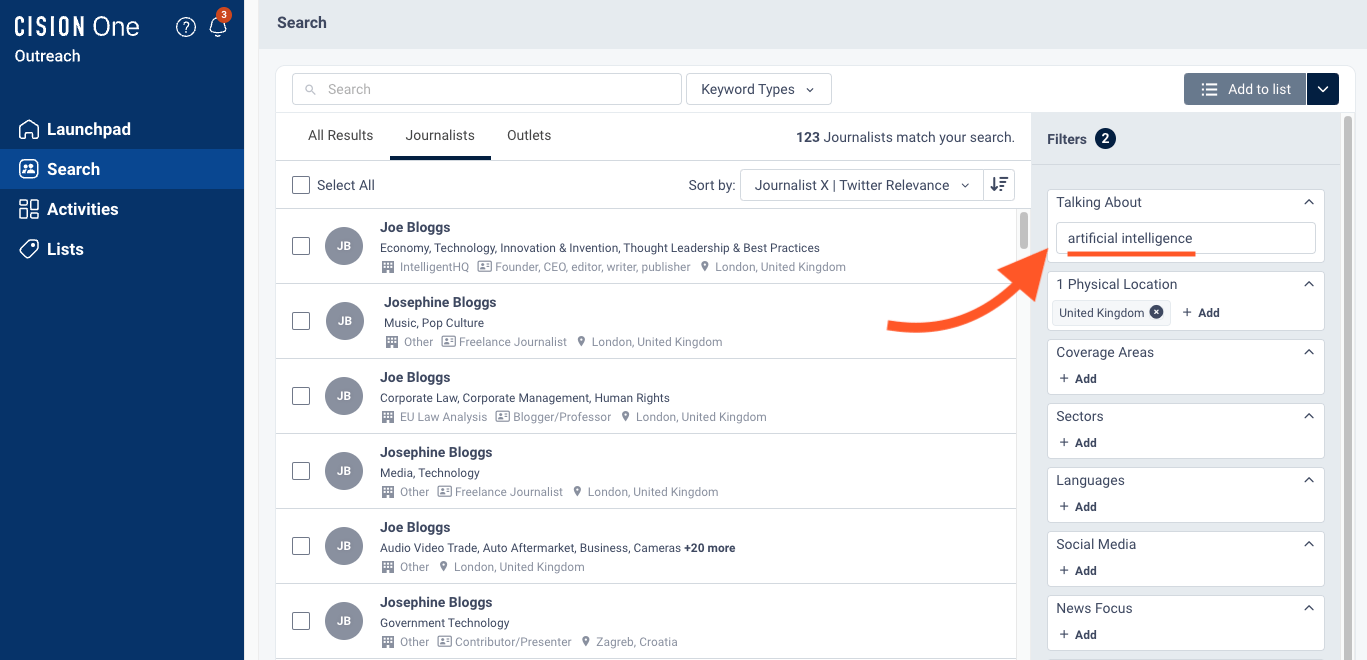
Search by frequency of publication
Work out a journalist’s publishing cadence and get an idea of turnaround times for coverage.
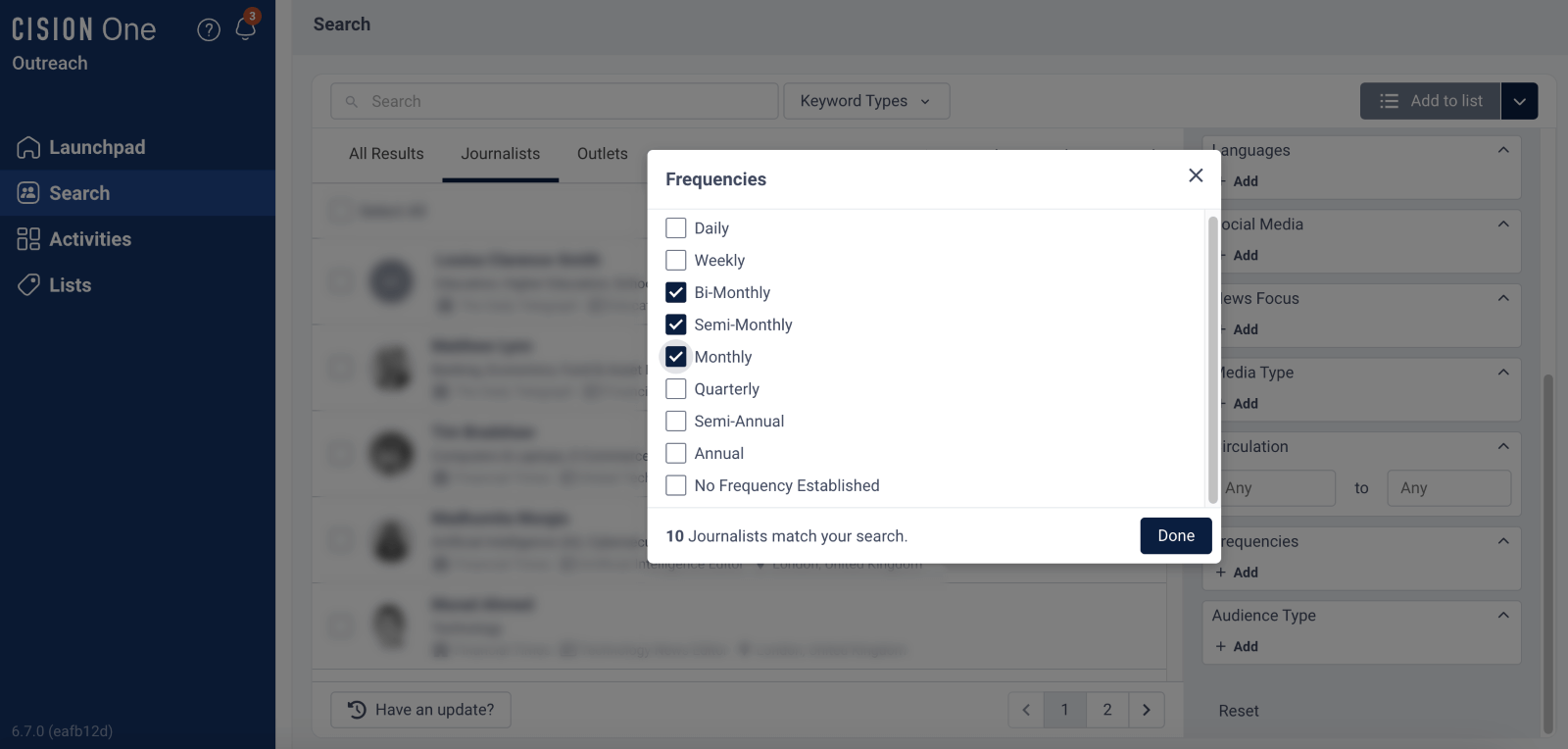
Search by job title
Find specific kinds of journalists by searching their biography (eg. “host”, “anchor”, “data journalist”).
Search by publication or outlet
Zero-in on publications that yourself or your clients have earmarked for coverage.
Search by location
Find global or local reporters/news outlets for regional coverage and syndication.
Search by social activity
According to a Cision webinar, Perspectives from Top Journalists, 96% of journalists report using social media professionally. Explore a journalist’s social media activity to better personalize your pitch.

Learn more about what journalists want to see from your pitches. Watch the webinar: How to Navigate the Evolving Media Landscape: Perspectives from Top Journalists
Discover journalist content
Dive into a journalist's portfolio so you can demonstrate you have a deep understanding of their work and audience.
Create media lists
Once you've found your dream contacts, a journalist database should allow you to save them to a curated media database list.
What Are the Benefits of Using a Media Database?
1. You stay in the know
Today’s media landscape is dynamic. Reporters and influencers move between outlets and swap roles.
A good journalist database keeps up with these moves so you don't lose touch with your media contacts.
Staying on top of the latest shifts means you can discover and reach out to the right people with the right information.
2. You save time
Sourcing contacts and curating lists to find journalists that are relevant to your message can be incredibly time-consuming.
A media database will spare you the heavy lifting, freeing you up to focus on the more important tasks of selling the story and tailoring pitches to properly engage your most relevant contacts.
3. You build better relationships and earn repeat coverage
According to Cision’s 2023 State of the Media Report, 3 out of 4 journalists admit to blocking PR professionals who send them irrelevant pitches.
Media databases allow you to record the details of your interactions, noting contact and follow-up preferences.
This way you can dodge the block button, and build long-standing, authentic relationships that lead to recurring coverage and new media opportunities.
Find out which PR tactics to avoid when pitching, according to 3k journalists. Read our latest State of the Media Report in collaboration with PR Week |
4. You improve with reliable data
A good media database not only helps you get your story distributed to as many relevant outlets and journalists as possible – it gives you the data you need to make better PR decisions going forward.
With valuable metrics like opens, bounces, and unsubscribes, you’ll be able to gauge campaign performance and adjust follow-ups for even better results.
This knowledge will help you and your team upskill and improve the efficiency of your PR strategy.
Choosing the Right Media Database
When it comes to choosing a media database solution, consider the challenges you keep coming up against. Here are some questions to ask vendors before you commit…
How many media contacts does the database contain?
More contacts mean more potential coverage, so the bigger the better, right?
If you’re struggling to reach the right people, you might need access to a greater number of unique contacts – especially if you operate in a niche industry that isn’t widely covered by the media.
Note that we said unique contacts.
Some databases double or even triple count journalists across publications, so it’s important to ask vendors about this – CisionOne features (850K) unique contacts only.
What is the make-up of media contacts represented in the platform?
Depending on your use case or goal, you want access to the right mix of media contacts, whether that’s journalists, bloggers, vloggers, influencers, TV and radio reporters, podcasters, or even analysts / research firms.
What is coverage like across specific industries and locations?
Ensure your database has a good depth and breadth of contacts in areas that align with your strategy.
Is the database global? Does it capture the regional and local influencers that reach your audiences?
If you’re targeting one or two specific regions/industries, these questions are key.
How frequently is the database updated to ensure contacts are active?
If you're struggling to find active contacts in your niche, you should prioritize a database with a high refresh rate.
But don’t just ask how often a database is updated – ask how it’s updated.
Many solutions scrape the web, resulting in quantity but not quality of data; information acquired in this way gets outdated easily.
The best media databases have a dedicated research team working daily to keep them as accurate as possible.
Does it offer email distribution and reporting?
If you regularly find yourself wondering whether your pitch has been read, prioritize a database with in-built email distribution and open/click tracking.
This will help you follow-up with your warmest leads and fine-tune important elements of your outreach; from subject lines to the contents of your pitch.
How will this integrate with other software platforms?
Will the database allow you to export data and integrate seamlessly with other platforms you use – email, media monitoring, wire distribution – to ensure an efficient workflow?
How is the database priced based on number of users and functionality?
Aligning pricing to your team’s size and functional requirements ensures maximum value. Have an honest assessment of must-have vs. nice-to-have features.
What kind of customer support will I get?
The best PR databases offer personal training and quality support from a dedicated team, available to you from the get-go.
Demos and initial training sessions, as well as a real phone number that leads to an actual human being on the other end, should be part and parcel of your database experience.
Can I filter and segment to find more relevant contacts?
Consider how much you can slice-and-dice the database based on the data that is most important to you – eg. geographic markets, beats, and media types.
Are journalist bios and past articles available to customize pitches?
Contextual information on reporters allows you to craft resonant, personalized pitches catered to their specific interests and needs.
Can I create targeted media lists and export contacts for specific campaigns?
Successful PR campaigns are borne out of well-researched media lists. Make sure the solution you opt for allows you to create them.
How fast can I get set up with access once I subscribe?
Find out if you have the ability to start pitching as soon as you’re signed on, rather than getting bogged down in a lengthy setup process.
Who Needs a Media Database?
Typically, PR and comms teams use media databases to find, research, and connect with journalists, but content and social media marketers can also earn great coverage using these tools.
Unless you are in an extremely niche industry with few journalist contacts, creating a manual media database for your PR is going to cost you far more in time and resources than investing in a professional one.
Competitive media database software like CisionOne can help you get there faster and more efficiently.
Cision combines the industry’s largest media database services with dynamic relationship management, helping you build authentic relationships with carefully vetted journalists, influencers, outlets, and more.
Through data-driven, personalized, and integrated campaigns, our platform will help you zero-in on the best contacts to reach your target audience, and earn you the media coverage you seek. Interested in learning more? Speak to a Cision expert.



